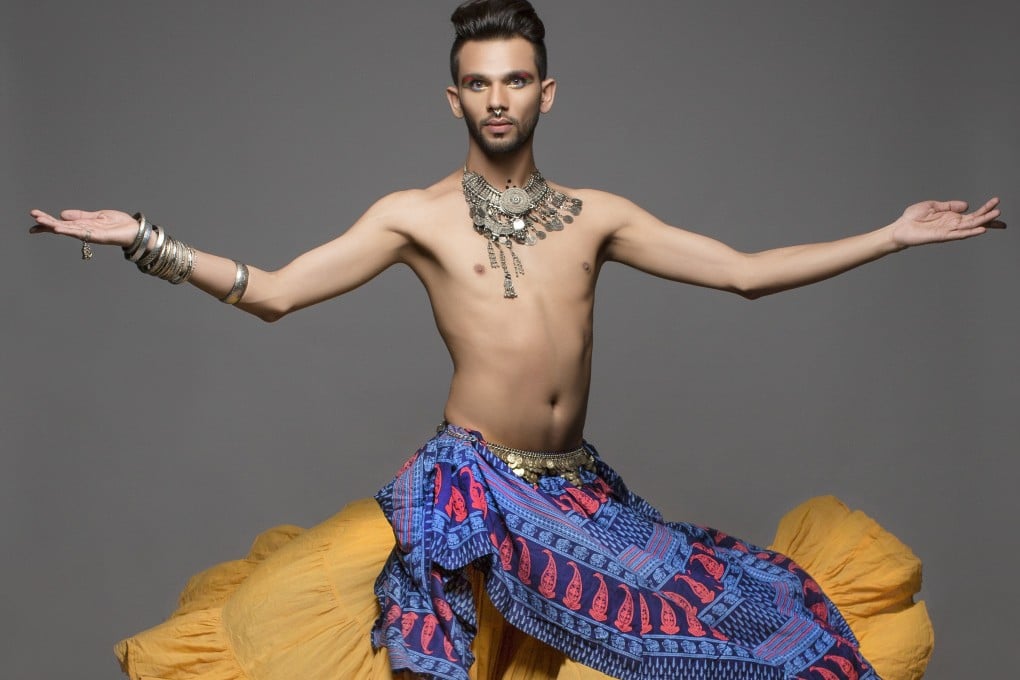How India’s first male professional belly dancer, Eshan Hilal, overcame prejudice to become a star
- Despite opposition from his orthodox Muslim family, Eshan Hilal, a 27-year-old from Delhi, has forged a career as a belly dancer
- By challenging social norms and ignoring gender stereotypes, he has inspired others in India to make unconventional life choices without fear

Wearing a short blouse that reveals a toned midriff, a long flowing skirt and a sequinned belt tied low across the waist, the dancer takes centre stage. Adorned with an exquisite silver necklace, chunky bangles and a nose ring, his short hair is swept back and he sports stylish stubble.
The music starts to play and the dancer’s hips sway, gently at first and then more vigorously, as he gracefully keeps time with the catchy tune. His fluid, sinuous movements seem effortless as he pirouettes, shimmies and spins, his arms and legs accentuating the movements of his belly and hips.
He is Eshan Hilal, India’s first professional male belly dancer. An accomplished performer, choreographer and fashion model, the 27-year-old is a rare male exponent of a dance form that is traditionally performed by women and has undertones of seductive femininity.
Hilal’s successful career as a belly dancer has been forged despite ferocious opposition from his orthodox Muslim family, which makes his journey even more remarkable. Driven by a conviction that dance is divine, Hilal is challenging social norms and smashing gender stereotypes.

The dancer shot to popularity in 2017 with performances on reality television shows that left celebrity judges and viewers enthralled. A sought-after professional today, Hilal performs at corporate events and conducts workshops at top dance schools throughout the country.
He has spoken at several TEDx events and walked the fashion catwalk wearing garments by designers from the National Institute of Fashion Design, India’s premier fashion design school. India Today, a leading English news magazine, voted him one of the top 10 modern icons of the country in 2017.